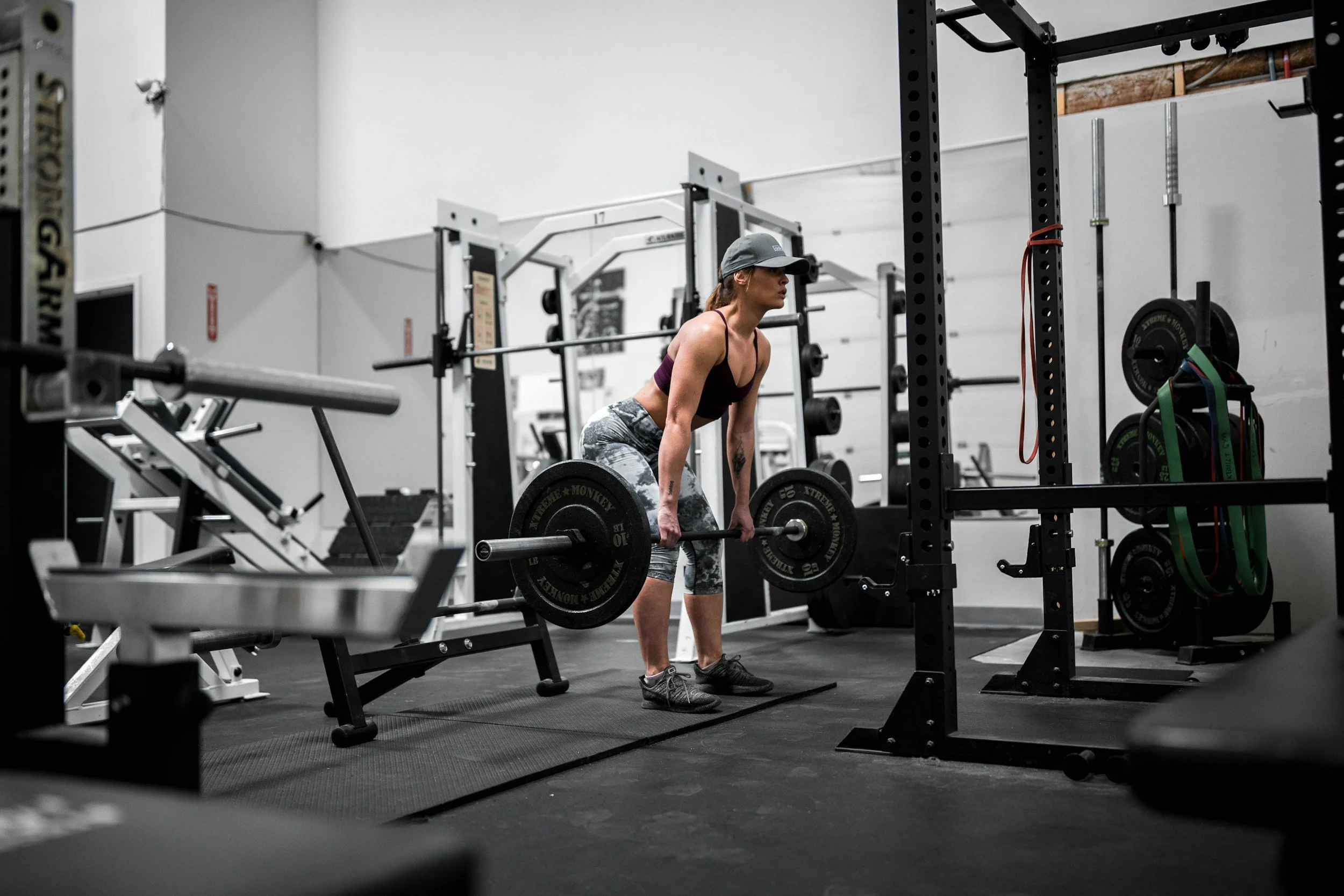5 TRAINING STRATEGIES THAT HELP YOU DO MORE IN LESS TIME
So, you want to build muscle and strength, but, like many others, you’re short on time (or just don’t want to spend more time lifting than necessary - totally fair).
While gaining muscle and strength does require a decent amount of time and effort, the good news is that you can set up your training sessions to make the most of the time you have.
We’re keeping this post short and to the point, to stay on theme.
In this article we’ll talk about:
What’s required to build muscle and strength
5 training strategies to maximize your time and gains
WHAT’S REQUIRED TO BUILD MUSCLE AND STRENGTH
In order to increase muscle or strength, we need to gradually increase the demand placed on our muscles overtime.
(and of course, eat sufficient calories, protein, and carbs, prioritize recovery by getting enough quality sleep…but I digress)
This is called progressive overload, and it can look like increasing:
load (weight on the bar)
reps
sets
range of motion (i.e., incorporating deficits)
training sessions
tempo (time under tension)
and more
As you can imagine, when we're short on time, not all of these strategies are practical because they often require extra time.
This is where these 5 strategies can come into play.
5 TRAINING STRATEGIES TO MAXIMIZE YOUR TIME AND GAINS
1. Use compound movements
Compound exercises are movements that work multiple muscle groups and joints simultaneously. Compound movements include:
Squats
Deadlifts
Overhead press
Bench press
Pull-ups & chin ups
Rows
Unlike isolation exercises (think bicep curls, leg extensions, etc.), which target a single muscle group, compound exercises engage several muscles simultaneously, making them more time efficient.
How exactly you incorporate these movements into your training will be dependent on numerous factors, including your goals, training split (i.e., full body, upper/lower, etc.), number of sessions done per week, time between sessions (1 day or 3?), etc., and of course your preferences should be considered, as that plays a role with enjoyment of what you’re doing and consistency.
One constant is that they’re generally best done at the beginning of your session, after your warm-up/mobility routine, any power movements, and before fatigue sets in with the rest of your training.
2. Incorporate supersets
More traditional training involves completing all sets of one exercise before moving on to the next exercise, these are called straight sets. It looks something like this:
Set 1: leg extensions (then rest for 1-2 minutes)
Set 2: leg extensions (then rest for 1-2 minutes)
Set 3 (last set): leg extensions (then move on to the next exercise and repeat this process)
Supersets are where you perform two (sometimes more) exercises back-to-back with minimal rest in between. It can look like this:
Superset 1: leg extensions (then little to no rest) immediately followed by leg curls (rest for ~1-2 minutes)
Superset 2: leg extensions (then little to no rest) immediately followed by leg curls (rest for ~1-2 minutes)
Superset 3: leg extensions (then little to no rest) immediately followed by leg curls (move to next superset)
A few things to know:
Supersets are typically done with isolation movements which target one muscle group (i.e., bicep or leg curls, tricep or quad extensions, shoulder raises, etc.), but could include shoulder press, dumbbell press or rows as well. I would recommend sticking to the traditional set up for squats and deadlifts.
It’s best to pair exercises that work different muscle groups. For example:
two exercises that work antagonist muscles, such as bicep curls with skull crushers (which target your biceps and triceps, respectively)
two exercises that target different areas of your body, such as side lateral raises and leg curls (which target your shoulders and hamstrings, respectively)
3. Drop sets on your last set
There’s nothing magical about drop sets, and these are not necessary to gain muscle or strength (especially for those just starting out), but they can be a tool to squeeze in a little bit more volume without much extra time.
Drop sets are where you complete your set of one exercise like normal (while going to failure), but instead of taking a rest period, you ‘drop’ the weight 20% and immediately complete another set to failure with that weight, then drop the weight ~20% yet again and immediately complete another set to failure.
It would look something like this:
Drop set 1: side lateral raises @ 20lbs (complete as many reps as you can until you cannot complete another), decrease weight to 15lbs (complete as many reps as you can until you cannot complete another) decrease weight to 12lbs (complete as many reps as you can until you cannot complete another)
Repeat for all sets
These can be performed with every set of an exercise, as described above, or only on the final set of an exercise.
Like supersets, this is also a technique that would be best saved for isolation exercises, rather than movements like deadlifts, squats, overhead press, or bench press.
4. Minimize unilateral exercises
Unilateral exercises are movements that work one side of the body at a time.
Examples:
Single arm shoulder press
Single leg Romanian deadlift
Bulgarian split squats
Single arm dumbbell row
Step-ups
Single leg glute bridge
Unilateral exercises do have their benefits (improved balance and stability, correcting muscle imbalances potentially reducing risk of injury, greater core engagement), so while I recommend sprinkling them into your training when it makes sense, they can be more time consuming since you’re training each side separately.
Here are some alternatives to the unilateral exercises listed above:
Single arm shoulder press (try barbell/dumbbell shoulder press)
Single leg Romanian deadlift (try barbell/dumbbell/kettlebell Romanian deadlift)
Bulgarian split squats (try front rack dumbbell squats or leg press)
Single arm dumbbell row (try barbell rows or cable rows)
Step-ups (try goblet squats)
Single leg glute bridge (try barbell/dumbbell glute bridge or frog pumps)
5. Go into the session with a plan and alternatives
The last thing you want to do when you're already pressed for time is enter your session without a clear plan, or waste time waiting for a piece of equipment to be available.
While you have less control over the latter situation, you can control having alternative exercises ready to go, just in case.
So:
Take time at some point in your week to plan for your upcoming week (just like you may do with your meals to set yourself up for success).
i.e., save the YouTube video/Pinterest/website links in your notes app with the days you’ll complete each, sketch out your program plan in a notebook or app (I’ve used the Strong app in the past, that may still be a decent resource but, then at least, you could only input 3 workouts using the free version), etc.
If you train at the gym, give yourself alternative options for exercises (especially for ones where your gym may have limited equipment or space for), so you don’t get held up waiting for equipment.
consider exercises that work the same muscle groups (for example: hack squats and barbell squats, cable pull downs and the assisted pull up machine, lying leg curl and the seated leg curl, chest press machine and dumbbell/barbell press, etc.).
Hopefully this gave you some helpful ideas on how you can save time training without necessarily needing cut your sessions short, or skip them entirely.
If you’re looking for additional help with training (or nutrition), or want to completely take the guesswork out of your training, I offer remote programming that’s 100% customized to your needs, where you simply open up an app and go.


